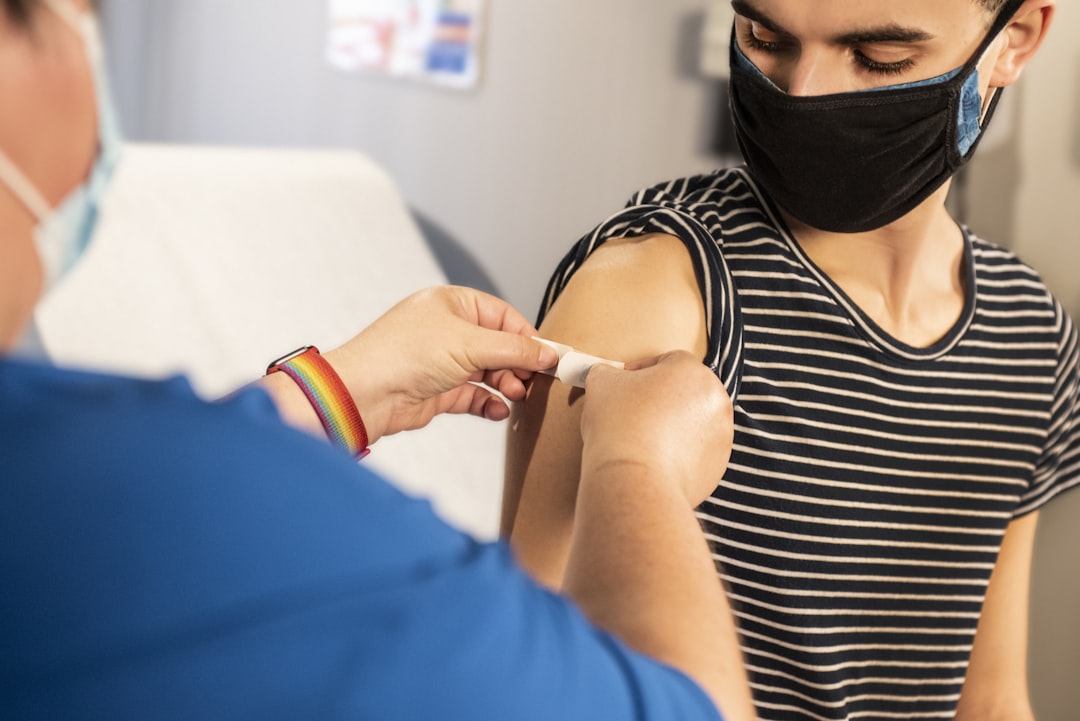What is it about?
Adult muscle stem cells (MuSC) exist in a unique dormant (or quiescent) state. Upon muscle injury, these dormant MuSC wake up by undergoing epigenetic, transcriptional, metabolic, and morphological changes followed by their transition into the cycling (or dividing) state for self-renewal and cell number increase. These actively-dividing cells (now named myoblasts) subsequently cease cell division and undergo differentiation and fusion to form new myofibers resulting in muscle regeneration. It remains unclear how the initial wakeup (or activation) process is regulated in MuSC upon muscle injury. Our previous work showed that PI3K, a lipid kinase, regulates a critical early activation checkpoint that determines whether MuSC can exit the dormant state. Our current work revealed that Paxbp1, a poorly-studied nuclear protein, regulates a distinct late activation checkpoint indispensable for the dormant MuSC to transition to the cycling state. Specific deletion of the Paxbp1 gene in adult MuSC affected neither their long-term maintenance in uninjured muscles nor the PI3K-dependent early activation phase upon muscle injury. However, it impaired the late stage of cell growth and caused cell death in Paxbp1-null MuSC, which prevented their transition into the cycling state and resulted in a complete failure in injury-induced muscle regeneration. Mechanistically, we found that loss of Paxbp1 in adult MuSC increased levels of reactive oxygen species (ROS), which strongly induced many p53 target genes and impaired a mTORC1-dependent cell growth program. Deliberate ROS reduction in Paxbp1-null MuSC could partially rescue their activation defects by allowing some cells to transition to the cycling state.
Featured Image

Photo by National Cancer Institute on Unsplash
Why is it important?
Paxbp1 is a poorly-studied nuclear protein. Our previous cell culture-based work indicated that it could regulate the proliferation of activated muscle stem cells (MuSC). The current work involved the generation of the first tissue-specific Paxbp1 gene knockout (KO) mouse model that allowed us to specifically study its functions in adult MuSC in vivo. We found that Paxbp1 critically regulates a cell growth and survival-related checkpoint during activation of the dormant MuSC upon muscle injury and is indispensable for injury-induced muscle regeneration. As Paxbp1 is broadly expressed in multiple tissues in mouse and is highly conserved in other animal species including flies, worms, fish, and humans, our Paxbp1 KO mouse model will be very useful in elucidating its functions in other tissues and will also shed light on its functions in other species. Moreover, a point mutation in the human Paxbp1 gene was also linked to a human genetic disease with global development delay and hypotonia. More in-depth mechanistic studies are needed to further elucidate the functions of Paxbp1 in development and tissue regeneration.
Perspectives
Our current work revealed an indispensable role of Paxbp1 in adult muscle stem cells (MuSC) during their transition from the dormant to the cycling state upon muscle injury. As Paxbp1 is broadly expressed in multiple tissues and cell types, its roles are not limited to muscle stem cells. It will be interesting to find out how Paxbp1 functions in other cell types. Most importantly, we need to uncover the specific biological processes or target genes that are directly regulated by Paxbp1.
Zhenguo Wu
Hong Kong University of Science and Technology
Read the Original
This page is a summary of: Paxbp1 controls a key checkpoint for cell growth and survival during early activation of quiescent muscle satellite cells, Proceedings of the National Academy of Sciences, March 2021, Proceedings of the National Academy of Sciences,
DOI: 10.1073/pnas.2021093118.
You can read the full text:
Resources
Contributors
The following have contributed to this page










